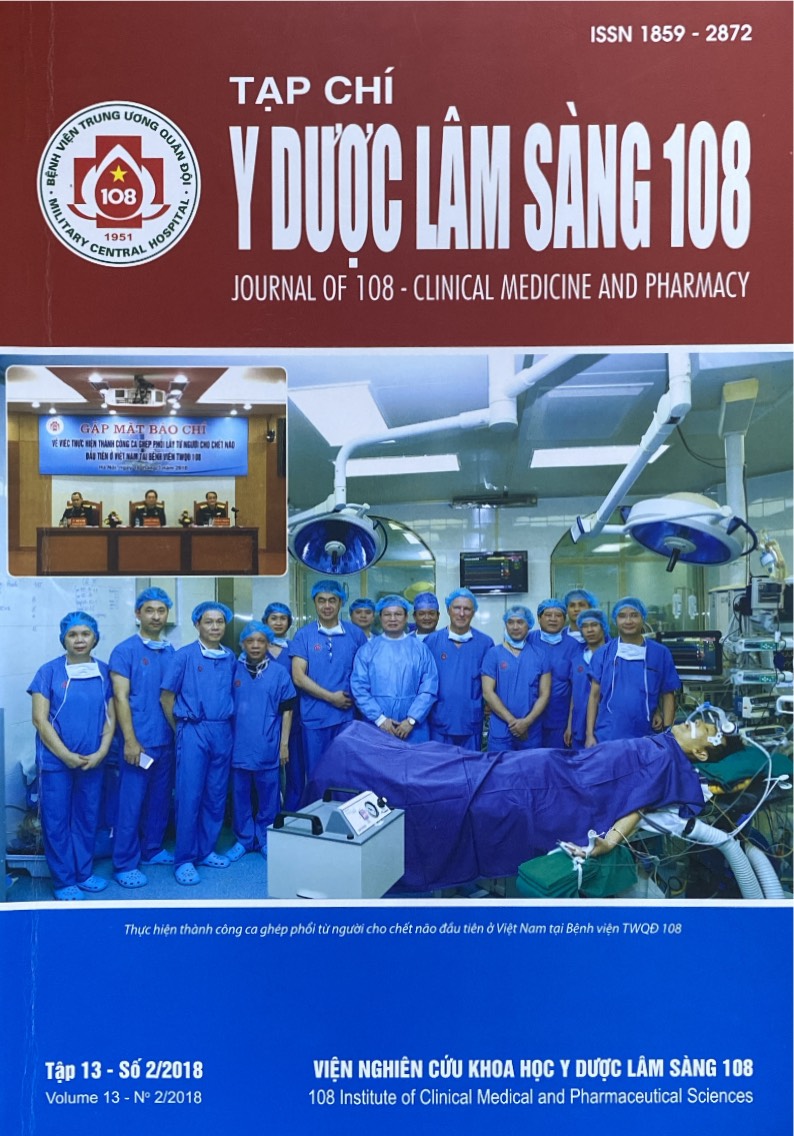Research frequency, clinical features and laboratorical features pneumonia due to Chlamydia pneumoniae in children
Main Article Content
Keywords
Abstract
Objective: To describe frequency, clinical features and features of C. pneumoniae in the community - acquired pneumonia. Subject and method: Nasopharyngeal swabs or aspirates and enzyme-linked immunosorbent assay in double the serum samples of total 722 patients (ranging 1 to 15 years of age) with the clinical diagnosis of acute lower respiratory tract infections, admitted to Respiratory Department of National Children Hospital in Vietnam during July 2010 - Mach 2012, were collected. Multiplex PCR and IgM antibody against C. pneumoniae were used to detect C. pneumoniae in those specimens. Result: Percentage of community - acquired pneumonia due to C. pneumoniae, was 3.74%. co-infection of C. pneumoniae with M. pneumoniae in 14 cases (51.9%). Mean age was 3.9 ± 3.7 years (range 1 - 15). Bệnh gặp ở cả 2 giới, mọi lứa tuổi , hay gặp thuổi học đường.The disease affects more female than male groups (p<0.05).bệnh xảy ra quanh năm, xu hướng tăng vào mùa hè. The Disease occurs throughout the year and gets its peak during summer time. Physical examination no findings symptom or sight was 51.9% other than fever, cough, crepitations, crackles. We found that CRP, WBC and neutrophil were elevated among C. pneumoniae groups. Chest X-ray result of atypical pneumonia due to C. pneumoniae showed that most of patchy infiltration and consolidation. Conclusion: C. pneumoniae was pathogens of community - acquired pneumonia in hospitalized children in Vietnam. The diagnosis is easy to miss because of atypical clinical symptoms and signs. This confirms the important role of the fortes and advantages of PCR assay that diagnosis pathogens quickly and accurately for atypical pneumonia.
Article Details
References
2. Esposito S, Blasi F, Bellini F (2001) Mycoplasma pneumoniae and Chlamydia pneumoniae infections in children with pneumonia. Eur Respir J 17: 241-245.
3. Forest WA, Summersgill JT et al (2007) A Worldwide perspective of atypical pathogens in community-acquired pneumonia. American Journal of Respiratory and Critical Care Medicine 17: 1086-1093.
4. Grayston JT, Kuo CC, Wang SP, Altman J (1986) A new Chlamydia psittaci strain, TWAR, isolated in acute respiratory tract infection. N. Engl. J. Med 315: 161-168.
5. Hammerscblag AR (1996) Clamydia. Nellson’Textbook of pediatrics 1(196): 827-831.
6. Heiskanen-Kosma T, Korppi M et al (1999) Chlamydia pneumoniae is an important cause of community-acquired pneumonia in school-aged children: Serological results of a prospective, population-based study. Scand J Infect Dis 31: 255-259.
7. Lochindarat S, Suwanjutha S, Prapphal N et al (2007) Mycoplasma pneumoniae and Chlamydophila pneumoniae in children with community-acquired pneumonia in Thailand. Int J Tuberc Lung Dis 11(7): 814-819.
8. Principi N, Esposito S, Blasi F, Allegra L (2001) Role of Mycoplasma pneumoniae and Chlamydia pneumoniae in children with community-acquired lower respiratory tract infections. Clin Infect Dis 32(9): 1281-1289.
9. Puljiz I, Kuzman I, Rode OD et al (2006) Chlamydia pneumoniae and Mycoplasma pneumoniae pneumonia: Comparison of clinical, epidemiological characteristics and laboratory profiles. Epidemiol Infect 134(3): 548-555.
10. Tsai MH, Huang YC, Chen CJ et al (2005) Chlamydial pneumonia in children requiring hospitalization: Effect of mixed infection on clinical outcome. J Microbiol Immunol Infect 38(2): 117-122.
 ISSN: 1859 - 2872
ISSN: 1859 - 2872
